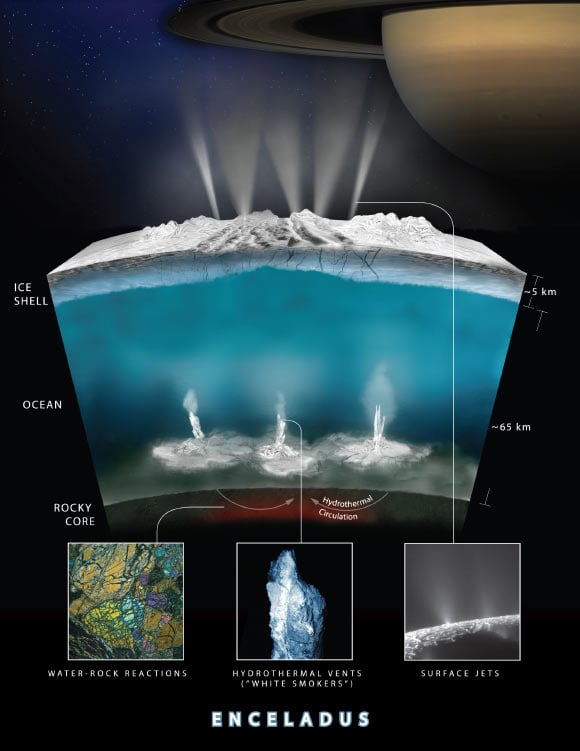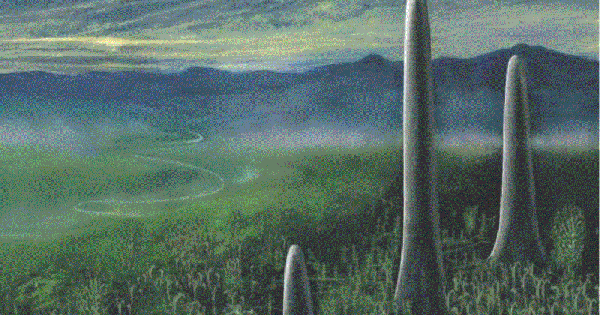(NLDO) - Some celestial bodies in the Solar System may have given birth to life using a system similar to what Earth possesses, even more powerful.
A team of researchers created computer models of hydrothermal circulation based on conditions on Earth and several other ocean-bearing bodies in the solar system, finding that in some places the door to life is even wider open than on the Earth's ocean floor.

Enceladus' structure could help the celestial body support life - Graphic image: NASA
According to Sci-News , hydrothermal systems were discovered on Earth's seafloor in the 1970s, when scientists observed fluids being released carrying heat, particles, and chemicals in some areas.
Over the years, these hydrothermal systems have been shown to be places that may have fueled the reactions that created early life on Earth, as well as providing the conditions that nurtured that life.
In recent years, several alien worlds have also revealed traces of underground oceans with hydrothermal systems.
The most obvious are Saturn's moon Enceladus and Jupiter's moon Europa.
Other Jupiter moons Ganymede, Calisto, Saturn's moon Titan and even the dwarf planet Pluto are also suspected to have such structures.
Astrobiologists hope that if hydrothermal systems are present, such worlds may also be capable of generating and sustaining life.
In the new study, Professor Andrew Fisher and colleagues from the University of California at Santa Cruz used a complex computer model based on hydrothermal circulation that occurs on Earth.
After varying variables such as gravity, temperature, rock properties, and fluid circulation depth, they found that hydrothermal vents could be maintained under a wide range of conditions.
When they applied the conditions of the above alien worlds to the model, they were shocked.
The results, published in the Journal of Geophysical Research: Planets, show that if a world with weaker gravity reduces buoyancy, the fluid does not become lighter when heated, and this reduces the flow rate.
This could increase the temperature in the circulating fluid, allowing more vigorous chemical reactions, perhaps including those that sustain life.
In other words, the hydrothermal systems that leading space agencies including NASA believe exist on Europa or Enceladus are even more likely to support life than similar systems in Hawaii or Antarctica.
This mechanism also shows that even though they do not have many conditions to maintain heat as well as Earth, the above celestial bodies possess another path for their underground oceans to be warm for a long time.
The discovery has significantly boosted hopes for NASA's planned alien life-hunting missions, including the Europa Clipper scheduled to launch later this year, and a robotic snake being built for Enceladus.
Source: https://nld.com.vn/xac-dinh-noi-co-su-song-ngoai-hanh-tinh-rat-giong-trai-dat-196240630080929584.htm









































































































Comment (0)